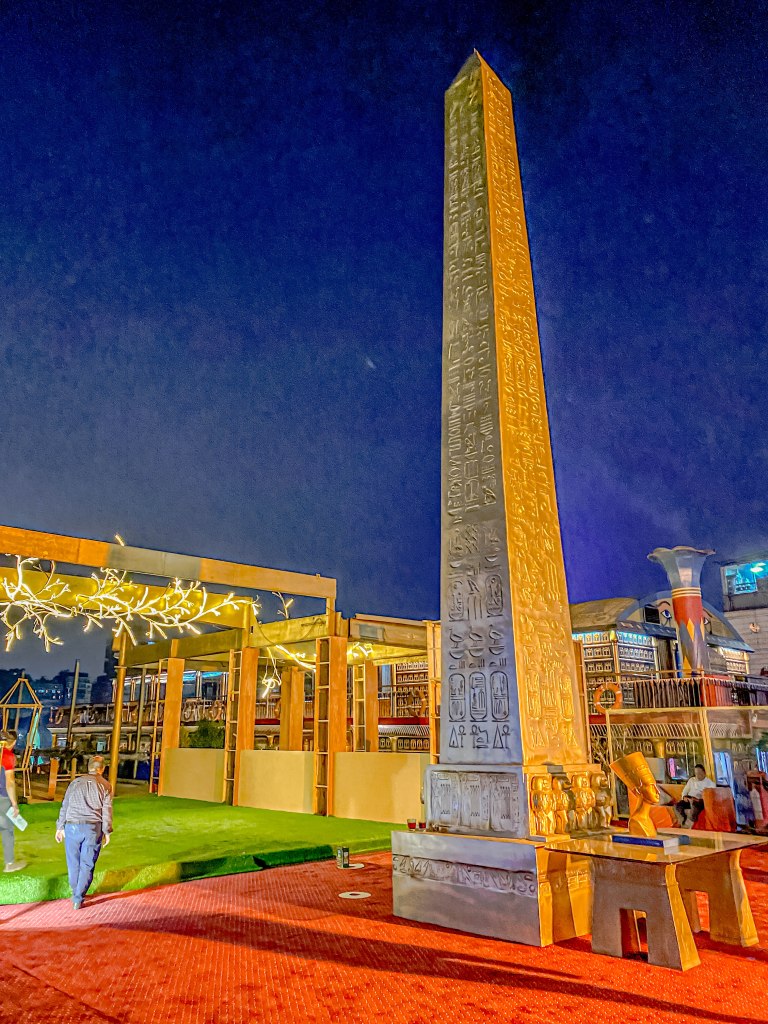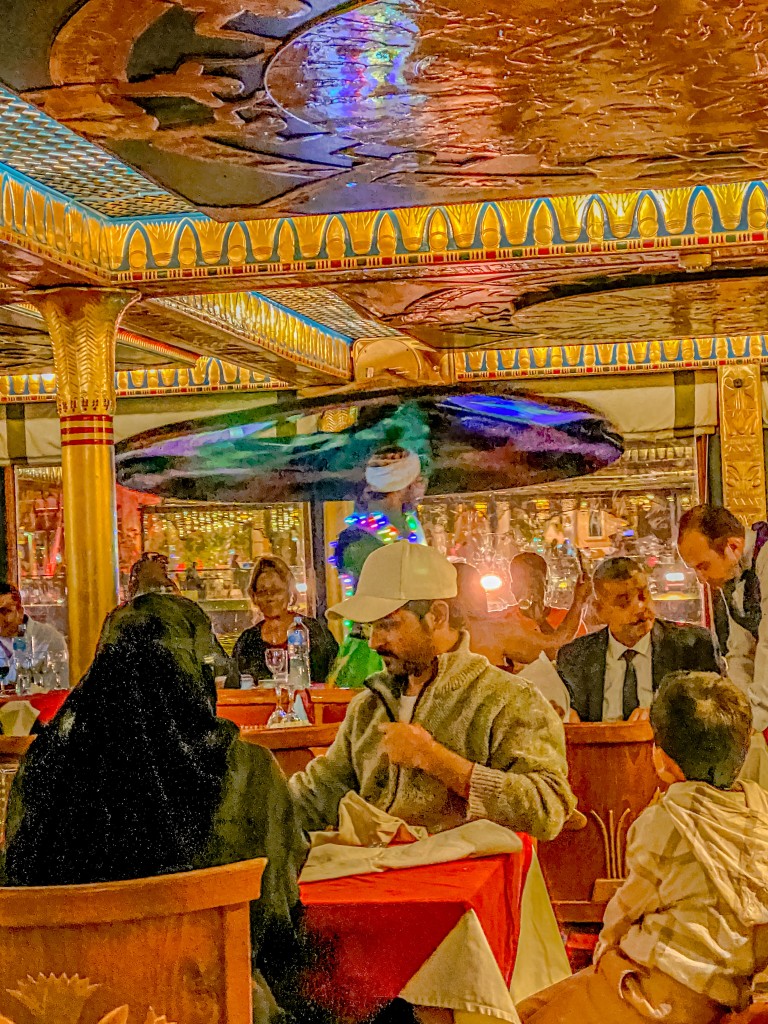March 29, 2022:
Dear Readers: March 29, 2022, brought us to the end of our long exploration of Israel, Jordan and Egypt. But we saved some iconic Egyptian sites for that last day. Our prime objectives for the day were a visit to the pyramids of Giza and the Sphinx; the ancient Egyptian capital of Memphis (the first capital of united upper and lower Egypt), and the necropolis of Saqqara where the first pyramid was built. All of these sites can be easily seen from Cairo, where we arrived last night after flying out of Luxor. In fact, it is somewhat startling to be driving along a modern road in Giza, and just have the pyramids appear behind the current buildings of Giza!

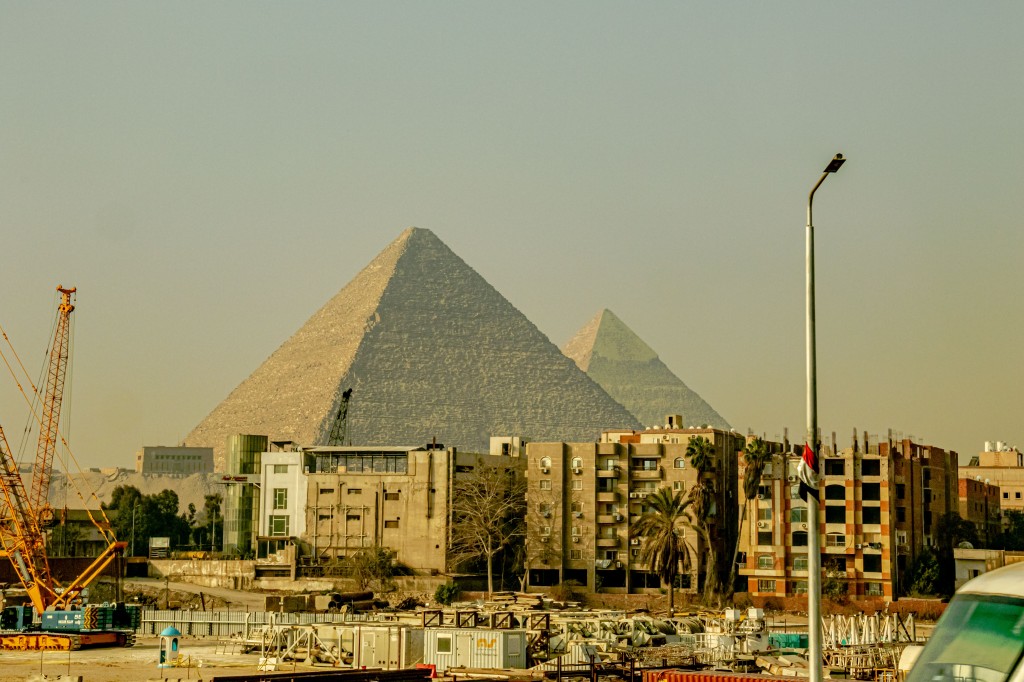
We had a little taste of Giza, when we experienced the light and sound show on the first day of our tour. But our visit on the 29th gave us a much more in-depth view. To do these sites chronologically, you would probably want to go to Saqqara first, because that is where the art of building a pyramid was perfected by the great court architect, Imhotep. He had a couple of false starts and King Djoser rejected those earlier attempts. We will also see them at Saqqara. The earliest tomb burials at Saqqara date back to the First Dynasty (about 3150 BCE), but Djoser’s step pyramid was completed in the Fifth Dynasty (he lived about 2700 BCE). Kings of at least 16 dynasties were buried at Saqqara before the kings moved to Giza (although the sites are relatively close to one another and all located in modern greater Giza). The great pyramids of Giza were constructed starting in about 2500 BCE.


Generally, tombs were started right after a king was crowned. Many tombs were left unfinished because the king died suddenly. The location very important, and a king would usually build close to his residence so he could oversee the construction. Tombs were always built in the West Bank of Nile because it was where the sun died each day. Tombs needed to be built well above water level so the annual Nile flooding would not disturb the kings’ remains. By the time of the construction of the Giza pyramids, the science of building the tombs had advanced quite far. For example, the Egyptians knew that to hold structures of the great weight and mass of the pyramids, the site had to be cleared completely to bedrock, and then a curtain wall would be dug around the base layers. The Egyptians had learned how to survey the site so all four corners of square base could be set on four cardinal points. The site was measured using the cubit unit of measure (equivalent to about 18 inches), and the measurements were taken using flax or palm fibers. Limestone blocks were cut from the Giza plateau, in the Nile Delta for the outside of the tomb; while the granite used for the inside of tomb came from the quarry we visited in Aswan (over 600 away miles on the Nile). 2.3 million limestone blocks used in the Great Pyramid of Giza. One block averaged 15 tons in weight, and some weighed as much as 30 tons. When you measure the base of the Great Pyramid of Giza, the greatest difference of measurement is only 7.9 inches! If all blocks from three pyramids of Giza laid end to end, would be enough to encircle France.
The Greek historian, Herodotus, figured it took a team of 100,000 workers 20 years to assemble the Pyramids of Giza. Contrary to popular belief, the workers were not slaves. Instead, pharaohs had a stable workforce each flood season. The king would hire a new team every year during flood season because farmers couldn’t work during that period, and this kept them from starving during flood season. It was also easiest to move people and stones during that time. Since wheels had not been invented yet, the blocks and other building materials were moved on wooden sleds, where water poured in front of sled to make a slippery mud that the sled could be pulled and pushed by the workers.
The Great Pyramid of Giza is 231 block courses high. In order to reach that height, the workers would build an earthen ramp and add to it to access each building course. Once the construction of the pyramid was complete, and the ramp was dismantled as they came down. The Great Pyramid is over 440 feet high. Over the centuries, it has lost about 30 feet in height. No mortar was used in its construction.



As you stand outside the Great Pyramid, you can see the actual entrance was about fifty feet above the current ground level. It was “first” opened by an Arab sheikh who conquered Egypt in the 9th century CE. However, to get access, he cut a new entrance at ground level where the depth of the outside materials was 700 feet at base. Needless to say, he found no treasures. The real entrance is on the north side. It is a descending corridor, and in the case of the Great Pyramid, the burial chamber is actually within the pyramid, and reached by an ascending corridor called the Grand Gallery, which hooks off the descending corridor. Today, visitors are not allowed into the corridors, so the closest you can get is a phot outside the entrance. Ultimately, the sarcophagus of the king was found, and it was discovered that it belonged to Khufu/Fufu, which means “king of the horizon”. His Greek name is Cheops. The tiny figure we saw in the Egyptian Museum was the only thing found of the contents of his tomb, and it was found 300 miles away.
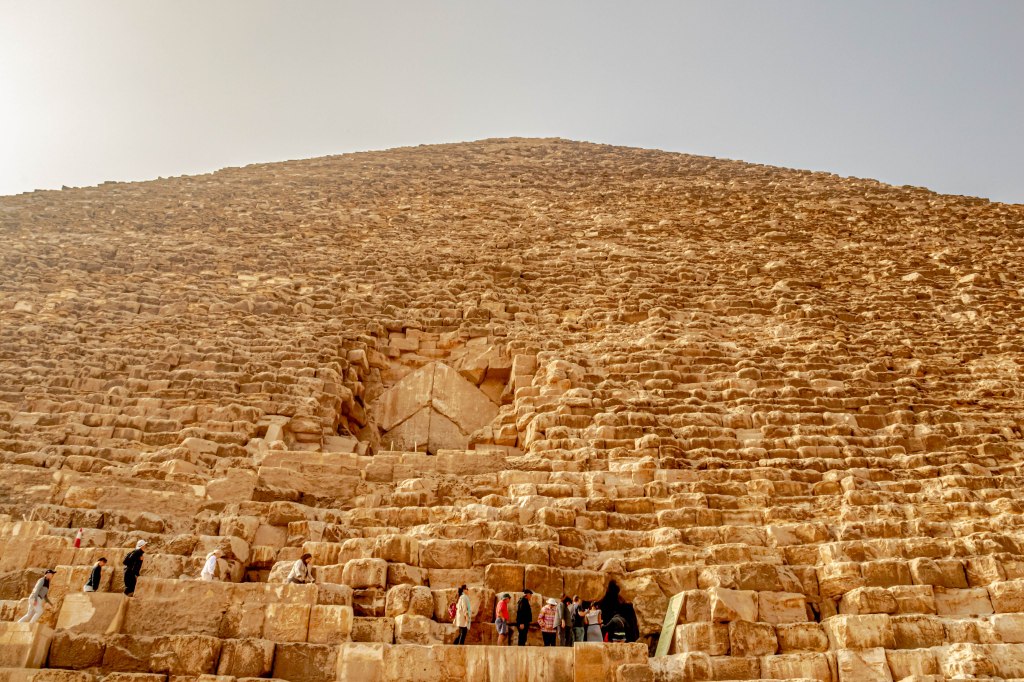



Then we took a short drive up onto the Giza plateau so some of our group could experience a camel ride. Sam knew a reputable camel driver, but if you are not with a trusted guide, you should avoid this activity lest you end up in the desert at the will of someone demanding a higher price to return you to the plateau. Having just had our camel-riding experience in Petra, Jim and I passed on this.





We returned briefly to the pyramid complex to view the second largest of the pyramids, which was built by Pharaoh Khafre. The distinguishing characteristic of this pyramid is that it still has a few courses of polished sandstone adorning its top. All of the pyramids in this complex would have had the same treatment covering their entire exteriors, but the polished sandstone was pilfered to adorn mosques all over Cairo in the intervening centuries. You can actually walk down into the burial chamber of this pyramid, but the entrance is very tight, and you have to walk a distance bent over to access the burial chamber. Jim passed on the opportunity, but I trooped along with some of our more intrepid fellow travelers. There is no artwork decorating the interior of the tomb like you see at the Valley of the Kings, but we all got a chuckle out of the large graffiti painted on the wall by Belzoni, showing his rediscovery of the burial chamber in 1818.





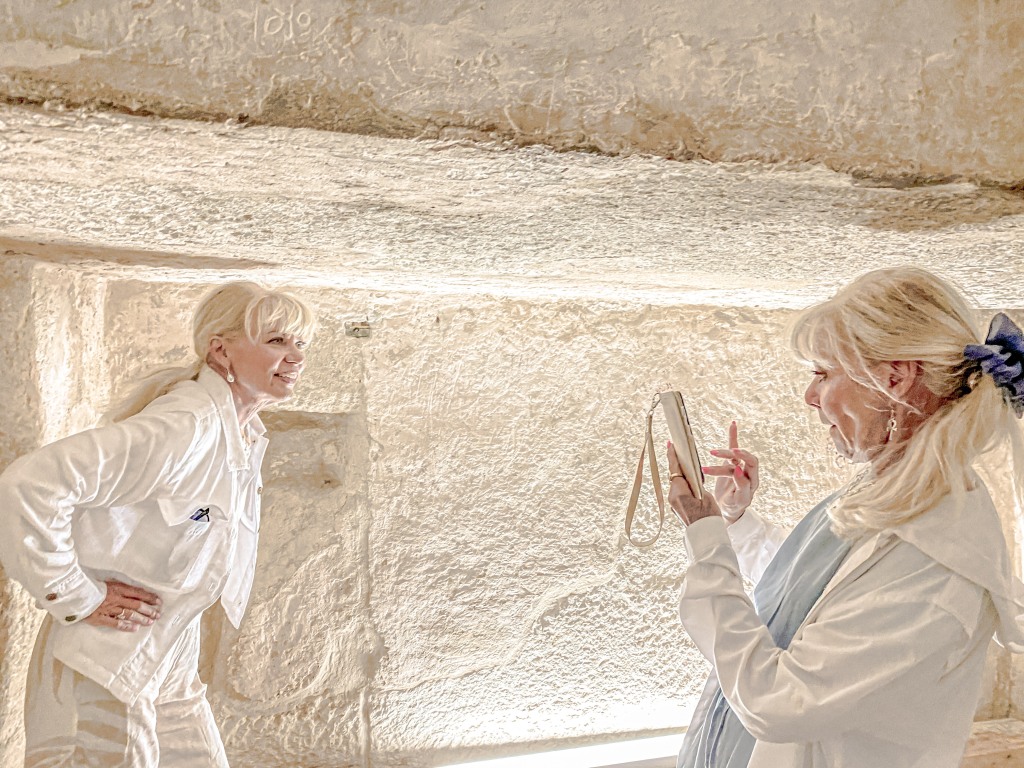



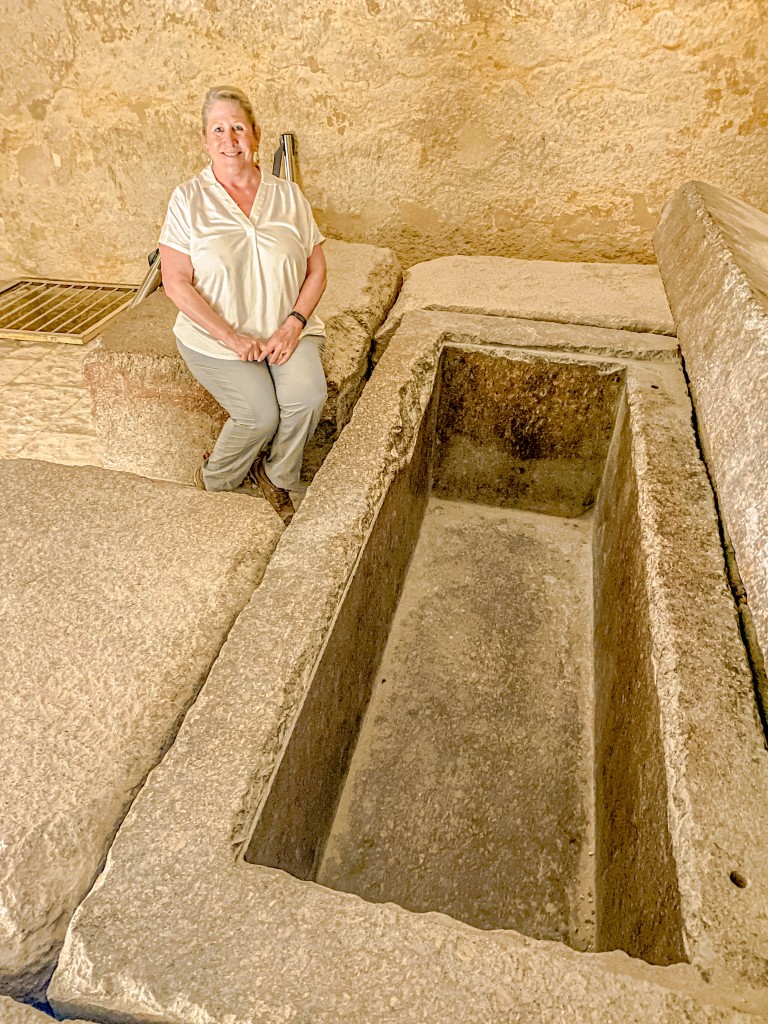


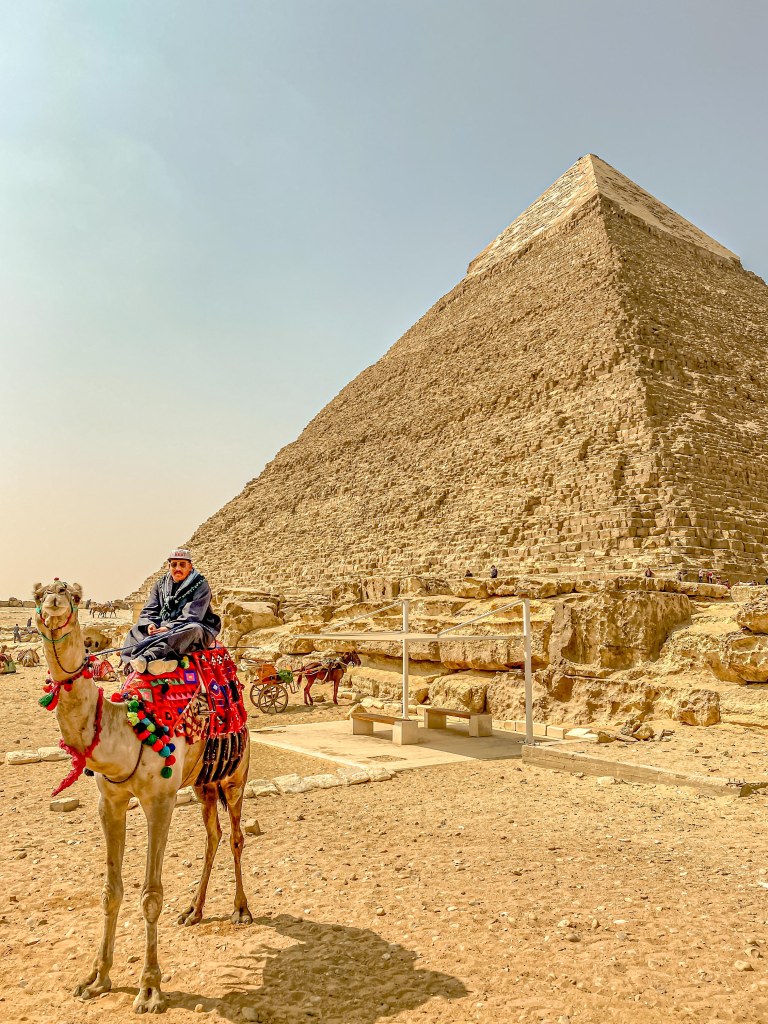
Then we went over to the Valley temple complex, where the mortuary temples for the Giza pyramids are located next to the Sphinx. Mortuary temples exist to do the mummification process when a king dies, but kings worshipped at these temples during their lifetimes, and some of them were quite elaborate. There was once a great causeway which connected the mortuary complex to the great pyramids. However, over time, the causeway was infringed by other buildings. There was also a canal way which connected the temple complex to the Nile.




The mortuary complex had an alabaster floor, and slabs of stone covered roof. The alabaster reflected light up to illuminate the faces of the statues of the gods in the temple. As kings were prepared for their final rites, there was a symbolic ritual inside the mortuary temple called the Opening of the Mouth. The purpose of this ritual was to restore the dead king’s senses before he journeyed into the afterlife.
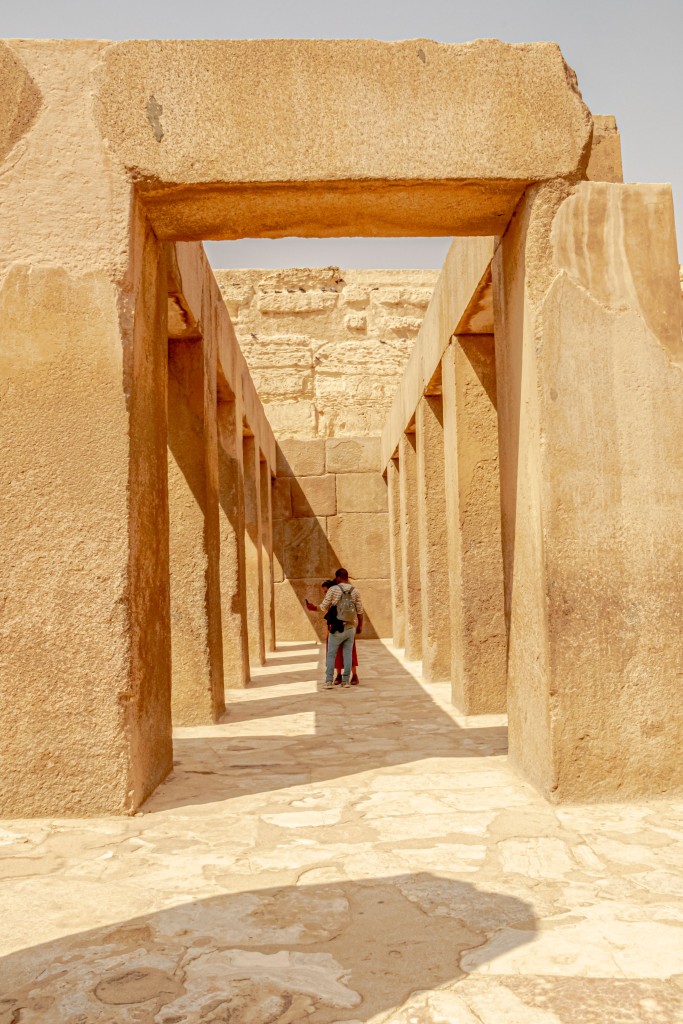


Then we enjoyed our in-depth visit to the Sphinx. The word “sphinx” means to connect or extend. They were viewed as guardian figures. Famously, this sphinx is missing its nose, crown, and beard. Contrary to myth, the Napoleonic French soldiers did not do it by shooting them off with rifle practice. The truth is that the quality of this sandstone was not very good, and the ages have not been kind to the statue.




Early in the Old Kingdom, when the pharaohs of the First Dynasty moved the capital of the united Egypt to Memphis, a temple complex was built there venerating the god Ptah as the creator of everything. Today, the site is primarily an outdoor museum. There is one building at the entrance to the area which holds an immense statue of Ramesses II, carved in the “aspirational style” of Egyptian sculpture. Sameh told us there is also a granite sculpture of Ramesses II which is larger, and which used to rest in front of Cairo train station. That statue will soon be moved to the new Grand Egyptian Museum, where it will be in the entry hall.



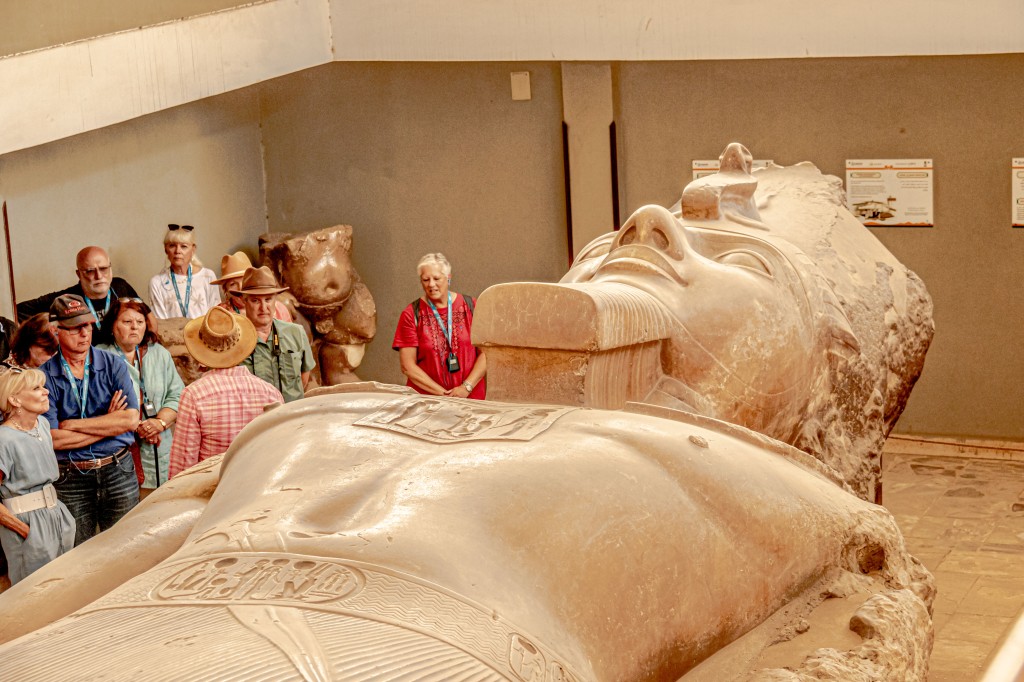
Outside the building, there was an alabaster Sphinx built to worship the god, Ptah, who was another creator god. Although it wasn’t as impressive in size as the big sphinx we had just seen, the workmanship was still lovely. There was once a causeway connecting the city of Memphis with the necropolis of Saqqara, which was our next step. In some incredible news just out, Egyptologists have just made a huge find of additional mummies at Saqqara. You can read about it here. https://www.washingtonpost.com/world/2022/05/31/egypt-mummies-saqqara-coffins-bronze-antiquities/
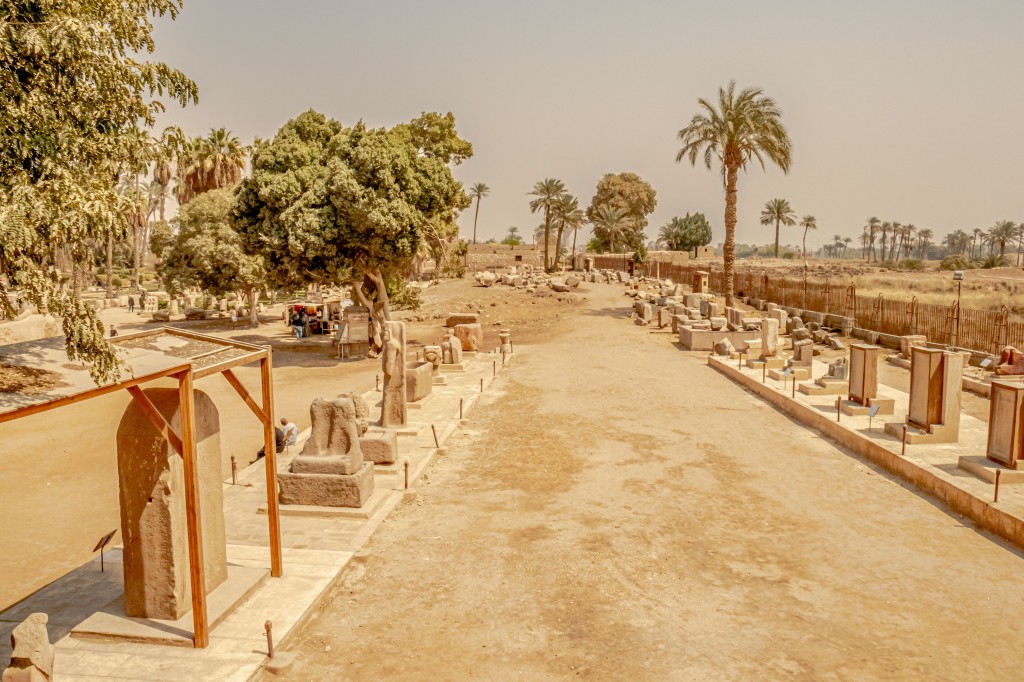



We drove the short distance to Saqqara for our final exploration of the trip. There we saw the step pyramid of King Djoser, and also some of the earlier failed attempts by Imhotep, who was the vizier of King Djoser, in addition to being his court architect. The step pyramid was built about 2700 BCE. Imhotep wasn’t sure it was going to last because the building materials were just mud bricks, but here it is nearly 5,000 years later. The step pyramid is important to understand the evolution of Egyptian burial practices from bench tomb to true pyramid. Masteba is the Arabic word for bench tomb. In essence, what Imhotep did in creating the step pyramid was to lay successively smaller mastebas on each level, ultimately going up six levels.
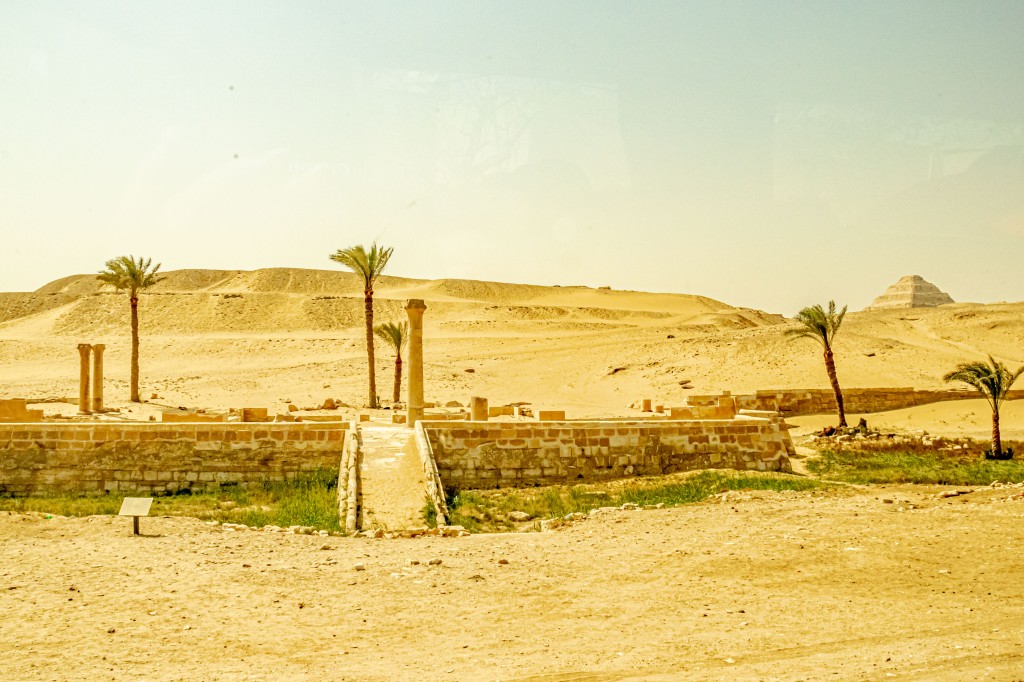


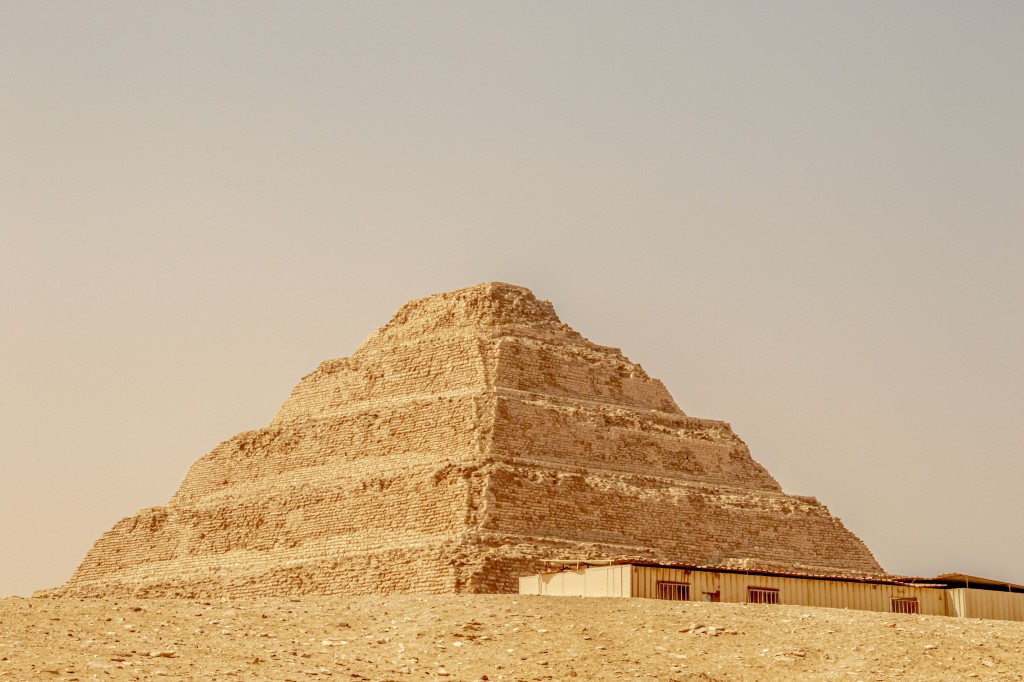




We also visited the mortuary temple and palace complex built for King Djoser right next door to the step pyramid. Archeologists believe that in essence, what Djoser was doing was building himself a palace to use in his afterlife. In the mortuary temple, there are a series of “engaged columns”, meaning 42 columns placed in such a manner that they created 42 alcoves. Experts think that these 42 alcoves held 42 statues of local gods and goddesses. Some of this temple has been reconstructed. You can tell which is original and which is reconstructed because the dark stone is the original construction, while the light stone is the replacement. This place was geographically significant because it is where the Nile valley delta starts, which is also the historical division between upper and lower Egypt. The delta gets wider to the north. Saqqara is one of the biggest ancient graveyards, with kings, nobles and commoners buried here.



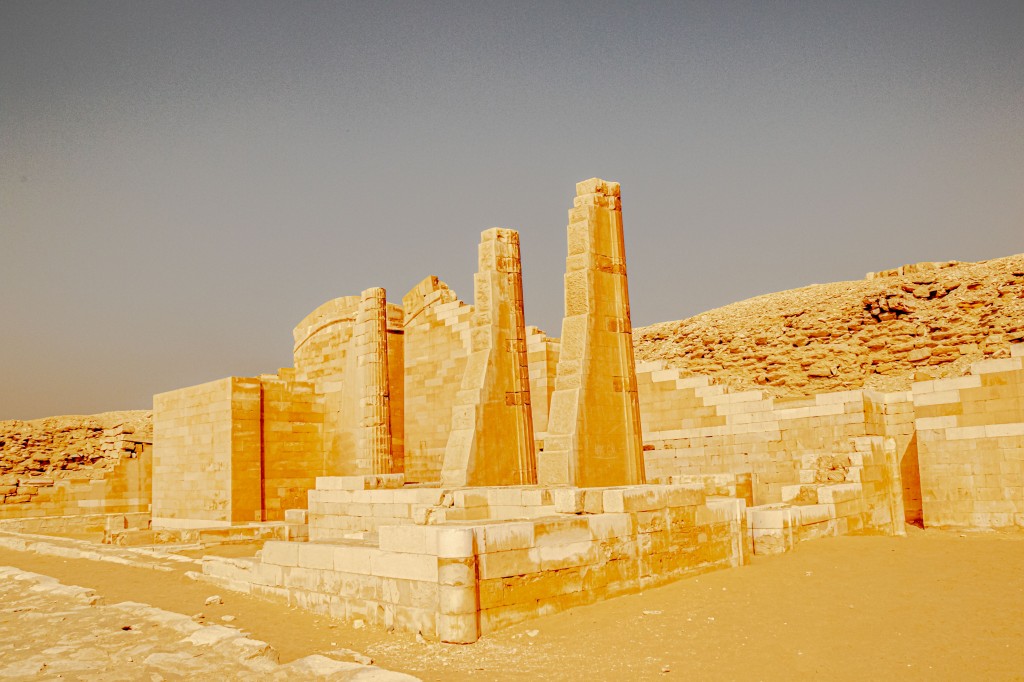


The first true pyramid was the red pyramid to the south of us. The one on the left is the unfinished pyramid (which King Djoser rejected). The Red pyramid is on the right. The crumbled pyramid was King Unas’ pyramid. King Unas ruled during the fifth dynasty. He was the first king to have the inner walls and ceilings of his burial chamber decorated. Where there were hieroglyphs on the walls, the text was prayers to help the king get to the afterlife. Given the abundance of the latest finds at Saqqara, one can only wonder what further marvels these sands are still hiding!



We finished our trip with a dinner cruise on the Nile. Although the cruise went right past our hotel, we still had to drive for a long time (over a short distance) to get to where the riverboat was located. There was plenty of lively (and loud) entertainment to accompany our cruise. And of course, there was one last whirling dervish to cap off the night. Until our next adventure, farewell, dear Readers!

